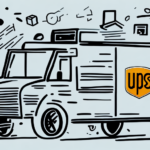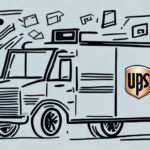Understanding UPS Declared Value
If you're a business owner frequently shipping high-value packages to customers or clients, you've likely encountered the term UPS Declared Value. This service offers an added layer of protection for your shipments beyond UPS's standard liability limits. In this article, we'll delve into what UPS Declared Value is, how it's calculated, the factors influencing its cost, and how it compares to other insurance options.
What is UPS Declared Value?
UPS Declared Value is a service that provides financial protection for shipments exceeding UPS's default liability. By declaring a higher value for your package, you ensure that UPS will reimburse you up to the declared amount if your package is lost or damaged during transit.
It's important to differentiate UPS Declared Value from traditional insurance. While Declared Value covers loss or damage during transit, it doesn't protect against a broader range of risks like theft or natural disasters. For comprehensive protection, consider supplementary insurance options.
How is UPS Declared Value Calculated?
The cost of UPS Declared Value is determined by the declared value of your package. Typically, it’s calculated based on the total cost of the items inside, including applicable taxes and shipping fees. UPS charges a fee for each $100 of declared value, with rates varying based on the shipment's origin, destination, and chosen service level.
For instance, as of 2023, declaring a package valued at $500 would involve a specific rate per $100, potentially differing between domestic and international shipments. It's advisable to use the UPS Declared Value calculator on their official website to get an accurate estimate.
Factors Influencing the Cost of UPS Declared Value
Several elements can affect the overall cost of UPS Declared Value coverage:
- Shipment Value: Higher declared values result in increased costs.
- Destination: Shipping to remote or high-risk areas may incur higher fees.
- Service Level: Faster shipping options like overnight delivery typically cost more.
- Package Type: Fragile or high-value items may require additional packaging, influencing costs.
Moreover, UPS periodically updates its rates based on economic factors and operational costs, so it's essential to stay informed about current pricing structures.
UPS Declared Value vs. Traditional Insurance
Understanding the Role of Insurance
While UPS Declared Value offers protection against loss or damage during transit, it's not a substitute for comprehensive insurance. Traditional insurance policies can provide broader coverage, including protection against theft, natural disasters, and other unforeseen events that Declared Value does not cover.
Insurance policies can also offer higher coverage limits and specialized protection for items like antiques, artwork, and jewelry. For businesses shipping high-value or sensitive items, combining UPS Declared Value with traditional insurance can offer robust protection.
Comparing to Other Shipping Insurance Options
Several third-party shipping insurance providers offer alternatives to UPS Declared Value:
- Third-Party Insurance: Providers like ShipInsurance offer customizable plans that may cover a wider range of risks.
- Carrier-Specific Insurance: Other carriers, such as FedEx and DHL, have their own declared value programs, which might offer different benefits and pricing structures.
It's crucial to compare these options to determine which best fits your business needs, considering factors like coverage limits, cost, and the specific risks you want to mitigate.
Optimizing Your UPS Declared Value Coverage
Determining the Right Declared Value
Choosing the appropriate declared value involves assessing the contents of your package and the potential financial impact if the items are lost or damaged. Consider factors such as:
- Item Value: Ensure the declared value accurately reflects the total cost of the items.
- Profit Margins: Factor in potential lost profits if high-value items are compromised.
- Shipping Risks: Evaluate the likelihood of damage based on the shipping route and handling methods.
Over-declaring can lead to unnecessary costs, while under-declaring may leave you financially vulnerable.
Tips for Reducing Declared Value Costs
Managing and minimizing the costs associated with UPS Declared Value involves strategic planning:
- Optimize Packaging: Use sturdy, appropriate packaging to reduce the risk of damage, potentially lowering insurance costs.
- Choose Cost-Effective Shipping Methods: Opt for service levels that balance speed and risk exposure.
- Negotiate with UPS: High-volume shippers may secure discounted rates on Declared Value coverage.
- Compare Carriers: Evaluate other shipping carriers that might offer more competitive rates for similar coverage.
Implementing these strategies can lead to significant savings while maintaining adequate protection for your shipments.
Best Practices and Common Mistakes with UPS Declared Value
Best Practices for Using UPS Declared Value
To maximize the benefits of UPS Declared Value, adhere to these best practices:
- Accurate Valuation: Ensure the declared value matches the actual value of the contents.
- Proper Packaging: Use durable packaging materials and secure items to prevent damage during transit.
- Complete Documentation: Provide all necessary shipping documentation to facilitate smooth claims processing.
- Understand Terms: Familiarize yourself with UPS's terms and conditions to know what is covered and what is not.
Common Mistakes to Avoid
Avoid these pitfalls when utilizing UPS Declared Value:
- Misinterpreting Coverage: Remember that Declared Value is not comprehensive insurance.
- Inaccurate Valuation: Falsely declaring a lower value can result in insufficient compensation.
- Ignoring Restrictions: Certain items are excluded from coverage; ensure your shipments comply with UPS guidelines.
- Delayed Claims: File claims promptly to increase the likelihood of successful reimbursement.
Filing Claims and Understanding Coverage
How to File a Claim with UPS
If your package is lost or damaged, prompt action is essential:
- Visit the UPS Claims Center on their official website.
- Log in to your UPS account and navigate to the claims section.
- Submit required documentation, including proof of value, shipping details, and evidence of damage or loss.
- UPS will review your claim and determine the reimbursement amount based on the declared value and the nature of the loss.
Ensure all information is accurate and submitted within the stipulated timeframe to facilitate a smooth claims process.
Understanding Your Rights and Coverage
Under UPS Declared Value, your rights include reimbursement up to the declared amount in cases of loss or damage during transit. However, it's important to understand the limitations:
- Excluded Items: Dangerous goods, prohibited items, and certain high-risk materials are not covered.
- Conditions: Claims are subject to proper packaging, accurate documentation, and adherence to UPS policies.
- Settlement: Reimbursements are based on the declared value and may not cover the entirety of your losses if under-declared.
Thoroughly review UPS's terms and conditions to comprehend the scope and limitations of Coverage.
The Benefits of Using UPS Declared Value for High-Value Shipments
Utilizing UPS Declared Value offers several advantages for businesses shipping high-value items:
- Financial Protection: Ensures reimbursement up to the declared value, mitigating potential losses.
- Peace of Mind: Provides confidence in shipping valuable items knowing they are covered.
- Business Continuity: Protects cash flow and profit margins by reducing the financial impact of shipment issues.
While UPS Declared Value is beneficial, it should be part of a broader shipping and insurance strategy tailored to your business's specific needs.
For more information on optimizing your shipping strategy, visit the ShipScience website.






















